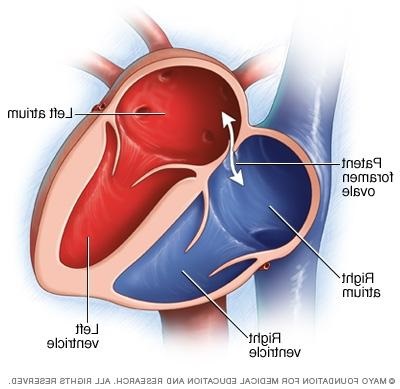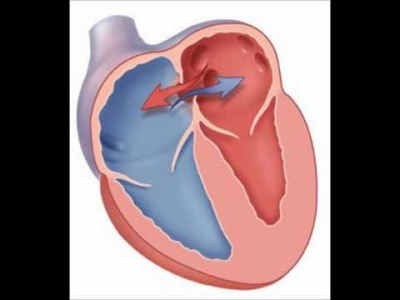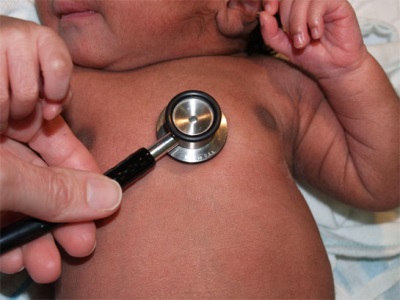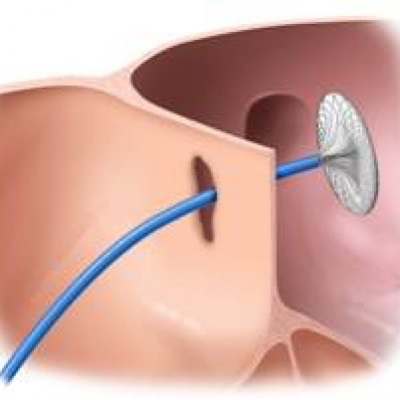Open oval window in the heart of a child
Any problems with the heart of a child scare parents and cause anxiety, especially if it is congenital defects. However, among the heart pathologies in childhood there are very serious, life-threatening, and not so dangerous, with which the child can live quite normally. The second is the open oval window (abbreviated as LLC).
What is it
This is the name of the feature of the septum inside the heart, which is present in all children during fetal development and is often detected in the newborn. The fact is that the fetus's heart functions a little differently than that of the infant or adult.
In particular, in the septum separating the atria, there is a hole called the oval window. Its presence is due to the fact that the lungs of the fetus do not work, and therefore the blood in their vessels receives little. The volume of blood that an adult is ejected from the right atrium into the veins of the lungs, the fetus passes through a hole in the left atrium and is transferred to the more active organs of the baby - the brain, kidneys, liver and others.
Such a window from the left ventricle separates a small valve that ripens completely to the beginning of labor. When the baby takes the first breath and its lungs open, then blood rushes to them, which is accompanied by an increase in pressure inside the left atrium. At this moment, the oval window closes with a valve, and then it gradually merges with the partition. If the window closes ahead of time, still in utero, it threatens heart failure and even the death of a child, therefore the presence of a hole is important for the fetus.
Closing the window occurs in different children in different ways. In some, the valve grows to it immediately after birth, in others - during the first year, in the third - by the age of 5. In some cases, the valve dimensions are insufficient to close the entire oval window, due to which the hole remains slightly open for life, and blood in a small volume is periodically dropped from the small circle into the large circle of blood circulation. This situation is observed in 20-30% of children.
An oval window that did not close completely after birth is not considered a defect in the septum, which separates the atria, since the defect is a problem much more serious. It is considered a congenital defect, and LLC is referred to as small anomalies, representing only an individual feature. In case of a defect in the septum, the valve is completely absent and the blood can be dumped from left to right, which is a health hazard.
The reasons
The most often open oval window in the heart of a child is associated with a genetic predisposition, which in most cases is transmitted from the mother. Other reasons for the occurrence of LLC are adverse effects during gestation:
- Bad environmental situation.
- Nicotine.
- Stress.
- Narcotic substances.
- Alcohol.
- Prohibited during pregnancy medications.
- Malnutrition.
Quite often, the non-closing of the oval window is noted in children born far earlier in life, and also in the presence of intrauterine growth retardation in term babies.
In the next video you can see how the blood circulation and the heart activity of the child before birth are normal.
Symptoms
If the open valve is an isolated problem and there are no other heart defects in the child, the clinical picture is quite scarce. You can suspect an LLC in a baby by:
- Identify heart palpitations.
- Changes in the color of the nasolabial triangle (it turns blue or gray) during feeding or crying.
- Shortness of breath.
- Bad appetite.
- Minor weight gain.
Preschoolers and children of school age may have problems with exercise tolerance and frequent inflammatory diseases of the respiratory system.
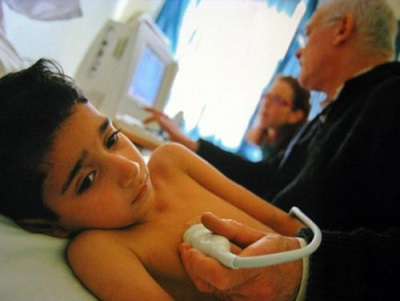
In the adolescent period, when the body is actively growing and hormonal changes occur, an LLC in children manifests itself:
- Weakness
- Feeling interruptions in heart rhythm.
- Increased fatigue.
- Episodes of vertigo.
- Periodically occurring causeless fainting.
Diagnostics
You can suspect the presence of a baby LLC after listening to the heart with a stethoscope. If the doctor hears systolic murmurs, he prescribes an ultrasound scan for the child, since this method is most preferable for detecting an oval window. Pathology is often detected during a planned echocardiography performed for all children in 1 month. In some cases, to clarify the problem, the baby may be given a transesophageal ultrasound, as well as angiography.
Ultrasonic signs of an open oval window are:
- Size up to 5 mm.
- Position in the middle of the partition.
- The variability of the visualization of the hole.
- Valve detection in the left atrium.
- Thin interatrial septum.
You can see the following video on how the LLC looks at the ultrasound scan.
Opinion Komarovsky
The well-known pediatrician confirms that almost all newly born babies have an oval window open and 50% of them remain unclosed until the age of 2 years. But even at the age of 2 to 5 years, the presence of such a window in the heart is considered a variant of the norm, which practically does not affect the child’s well-being and health.
Komarovsky emphasizes that this is not a heart disease and most of the children close the window itself in the first years of life without any intervention from the doctors.
Treatment
If there are no pronounced clinics and problems with the work of the heart, which is especially often the case of LLC, no medication is required. The child is recommended measures that are important for general body strengthening:
- Walks in the open air.
- Balanced diet.
- Proper distribution of loads and rest during the day.
- Hardening procedures.
- Physiotherapy.
If there are complaints from the heart, children are prescribed drugs for the nutrition of the myocardium and vitamins. Most often, babies are prescribed l-carnitine, ubiquinone, panangin and Magne B6.
If the LLC is combined with other defects, the cardiac surgeon is treating the child, since surgery is often required. One of the effective measures with an open oval window is the insertion of a patch probe into the child's femoral vein. When the probe reaches the right atrium, a patch is applied to the window and closes it. While it will dissolve within a month, the processes of formation of connective tissue are activated in the partition, as a result of which the oval window closes.
Forecast
Many parents worry that a “hole in the heart,” as they call LLC, will threaten the child’s life. In fact, this problem is not dangerous for the baby and most of the children with an unclosed window feel quite healthy. It is only important to remember some restrictions, for example, in relation to extreme sports or professions, in which the load on the body increases. It is also important every 6 months to examine the baby at the cardiologist with an ultrasound study.
If the oval hole remains open after the five-year period of the child, it is most likely that it will not become overgrown and will remain in the child until the end of life. At the same time, such an anomaly has almost no effect on labor activity. It will become an obstacle only for the profession of a diver, a pilot or an astronaut, as well as for strong sports loads, such as weightlifting or wrestling. At school, the child will be assigned to the second group of health, and when the boy is called up from the company, they will be considered as category B (there are limitations in military service).
It is noted that after the age of 40-50 years, the presence of LLC contributes to the development of ischemic and hypertensive disease. In addition, during a heart attack, an open window in the septum between the atria adversely affects the recovery period. Also, in adults with an open window, migraines appear more frequently and shortness of breath often occurs after getting out of bed, which immediately disappears as soon as the person lies back into bed.
Among the rarely occurring complications of an LLC in childhood, embolism may occur. This is how gas bubbles, particles of adipose tissue, or blood clots, such as injuries, fractures or thrombophlebitis, enter the bloodstream. When it enters the left atrium, the emboli move to the vessels in the brain and cause brain damage, sometimes lethal.
It happens that having an untight oval hole helps to improve your health. This is observed in primary pulmonary hypertension, in which due to high pressure in the vessels of the lungs there is shortness of breath, weakness, chronic cough, dizziness, fainting. Through the oval window, the blood from the small circle partially passes into the large one and the vessels of the lungs unload.
You can learn more about the open oval window from the following video.


